
We exist in an electronic era, it’s unsurprising that the healthcare industry has adapted. From smartwatches’ data-driven insights to smartphone applications that assist in managing chronic diseases, it’s apparent that technology is transforming healthcare.
However, what are individuals obtaining? As a long-standing public health physician and pioneer in healthcare’s digital transformation, below are some of the most effective trends in digital health that I see bringing the change in the sector right now.
1. Rising Trends in Digital Health
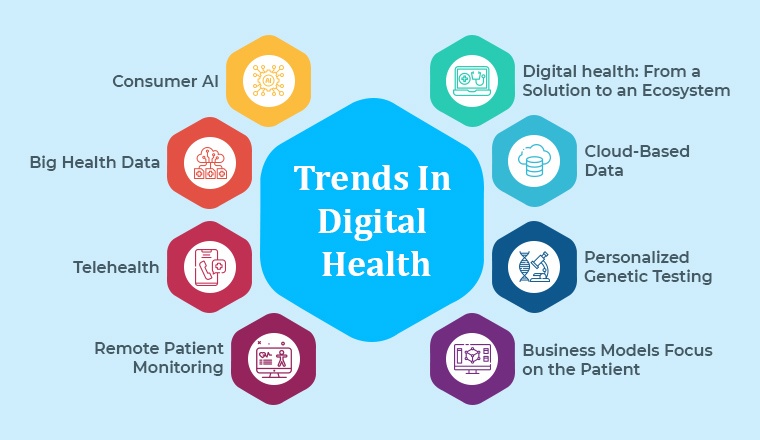
1.1 Consumer AI
Numerous digital health companies and healthcare providers already have included artificial intelligence (AI) throughout existing operations — and this is not solely for cost-cutting motives. With the assistance of AI in health systems, medical institutions and healthcare organizations may more effectively address challenging patient management concerns such as declining patient experience, hospital readmissions, and growing costs of treatment.
Besides this, consumer AI plays a critical role in advancing the condition of hospital environments and drug development. Here’s an example of what wonders can AI do in the field of Medical Science and Drug Development:
Fascinating example of the power of #AI in #healthcare. This team identified a new drug in just 46 days, a process that can often take 10 years. https://t.co/pmowylwBsM
— Pat Gelsinger (@PGelsinger) September 18, 2019
After all, personalization is critical to achieving superior health results. What is also assisting in the advancement of consumer AI into the digital health industry is its popularity as a wearable technology. Through monitoring and data gathering, software such as Google Fit and Apple HealthKit give consumers a comprehensive view of their diet and wellbeing, which may help people to understand their ailments and get preventative care.
All the swear to make the regulatory system robust will continue to face obstacles. These challenges of confidentiality in Digital health records may need to be tackled in what some professionals refer to as “digital trust,” as technologies swiftly arise in order to meet the demands for patient-centered treatment.
1.2 Big Health Data
Smartwatches also contribute to the growth of big health data, it is one of the fast-growing repositories of materials that may give healthcare providers and care professionals a scope to improve patient outcomes.
For example, large health data may be utilized to improve the prediction of chronic disease development in people who are prone to it. Additionally, it has the potential to enhance clinical pathways and med-tech processes. This is consistent with previous demands to shift the focus away from individual medical records and toward comprehensive health plans, as well as toward using data to offer information rather than merely enabling transactions.
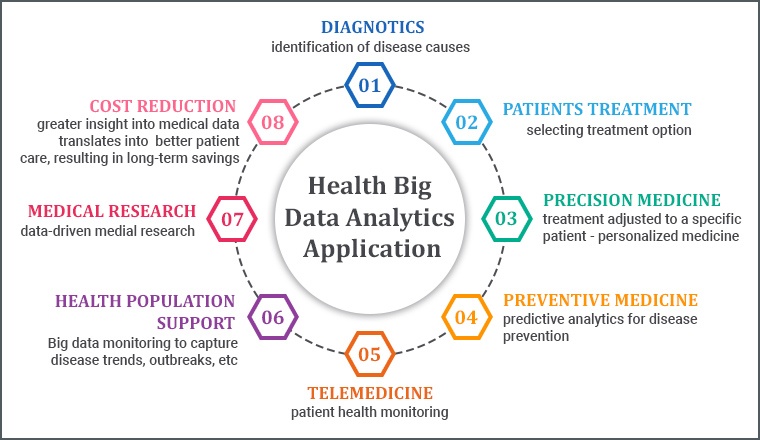
Additionally, there is a renewed emphasis on establishing big health data efforts that facilitate secure communication between healthcare providers and their patients, particularly in regards to cloud-based techniques that allow real-time monitoring of health care information.
Before going into another healthcare trends, Take a look at some other resources about Big Data in Healthcare
Cancer Cures Could Already Exist In Big Data
Applications and Examples of Big Data in Healthcare
1.3 Telehealth
Many people had their first digital visit during a period when they were unable to meet physicians in person owing to the contagious aspect of COVID-19. Telemedicine consultations increased from 1-2 percent of all ambulatory care trips prior to the epidemic to 30% among all sessions. Consumer readiness to adopt telehealth increased to 66%, reviving the resting behemoth. Health institutions estimate that up to 40% of general practice sessions may be performed distantly. During 2019 and 2020, revenue in telemedicine technologies nearly quadrupled, increasing from $1.1 billion to $3.1 billion.
See here what telehealth.hhs.gov says about Telehealth.

“COVID-19 supported the testing and deployment of digital health/telemedicine technologies efficiently,” Martin observed. “Tens of millions of people were compelled to check out this new digital healthcare model by situation and security, and they loved it. This benefits disruptors since they are not required to invest marketing money to get patients. Health systems and programs must make significant investments in digital technology or risk being left behind.”
Here’s a tweet from COHI approving the significance development in Telehealth.
Telehealth has been an important tool even in oral health care through the COVID-19 pandemic. Check out this great video by @@NNOHA to watch a live example: https://t.co/R9gYqnAEJA
— COHI (@CTOralHealth) June 16, 2022
Apart from increased use, investments in telemedicine are being pushed by improvements in government and commercial payer payment policies. It became obvious early on that telehealth had the potential to increase efficiency and cut costs, while also expanding access to treatment and reducing patient demand on institutions. Preventative treatment can also help minimize needless emergency room readmissions—by involving patients more often and at a cheaper price.
1.4 Remote Patient Monitoring
Digital health technologies and medical devices will play a greater role in patient monitoring, offering assistance, and analyzing behaviors—all from the comfort of their homes. In fact, Telehealth is a good example and torchbearer for RPM. The addition of digital indications has the potential to greatly expand usage cases for remote patient monitoring (RPM).
In 2020, total financing for RPM initiatives will further quadruple to $941 million, up from $417 million in 2017. As with telemedicine, its expansion has been facilitated by alterations in financing structures. Healthcare investors anticipate a surge in demand for RPM solutions for acute medication management in 2021. As significant healthcare gains traction, these solutions assist healthcare providers in gaining access to patient data and enabling proactive care strategies. Accessibility to long-term patient records has been demonstrated at COVID-19 to aid in patient triage to enable more results quickly.
Here’s an event of Cincinnati Children’s Hosptial participating in Telehealth awareness weak to support the innovative cause.
As part of #TelehealthAwarenessWeek we would like to introduce you to Remote Patient Monitoring. This service allows families to spend more time at home and less time traveling back and forth for follow-up appointments. Learn more: https://t.co/RfkMuEYuUQ pic.twitter.com/XWJIq9yBm4
— Cincinnati Childrens (@CincyChildrens) September 21, 2022
1.5 IOT and Medicine
The term “Internet of Things” (IoT) refers to the expanding network of physical things embedded with software, electronics, and other innovations that allow them to communicate and share data with other computers and gadgets in the digital world.
One of the fastest-growing areas of IoT, medical IoT makes use of connected devices, sensors, and software to better serve patients. Medical IoT can provide upgraded versions of conventional medical equipment, such as the smart inhaler, which communicates with a smartphone app to track the patient’s inhaler use.
1.6 Cloud-Based Data
The acceptance of Cloud computing is helping to bring in a new age of healthcare digitization. Cloud computing offers quick access to and processing of data, which helps healthcare practitioners to make better educated real-time choices.
Here’s what Sundar Pichar (CEO, Google) has to say on this:
“By pairing the Mayo Clinic's world-class clinical expertise with our capabilities in AI and cloud computing, we have an extraordinary opportunity to develop services that will significantly improve lives.” —Google CEO Sundar Pichai, via @Forbes ↓ https://t.co/1kUvsScmdk
— Google Cloud (@googlecloud) September 16, 2019
Additionally, healthcare businesses are beginning to leverage cloud-based technology for improved information management. This involves implementing electronic health records (EHRs), which enable healthcare professionals to easily store, monitor, and exchange data.
Additionally, cloud networks are laying the groundwork for improved telehealth solutions such as remote medical monitoring and mobile health services. Virtual healthcare services, I believe, will become an increasingly feasible choice for people who choose to remain at home in the future.
1.7 Testing, Tracking and Diagnostics
Investors and creators in the healthcare industry are eager to improve diagnostic tools. Francis argued that early detection of sickness or a shift in health status should immediately prompt the next necessary measure. He further asked, “How can I efficiently share information with the right individuals if I require a recent negative COVID-19 test or evidence of immunization to get on a plane or bring my kid to school?”
The requirement to manage massive scale distribution and screening for COVID-19 pushed testing and tracking technology to the forefront in 2020. This prompted a flurry of novel approaches of triaging and keeping tabs on huge groups of patients and community members. These systems can adapt to new circumstances and constitute the basis for tracking populations in the future.
1.8 Apps for Employee Wellness
Mental health was severely compromised by the prolonged stress of living during a pandemic. Downloads in the wellness app industry were driven by widespread interest in mindfulness programs like Headspace, Liberate, and Calm. The New York Times reports that Calm has amassed 10 million new members and has raised $300 million from a consortium of venture capital firms. The business is seeking $75 million to push its market cap beyond $2 billion.
As a result, more and more companies are beginning to see the potential benefits of implementing wellness app programs for their staff. Employer-provided wellness apps may be recent, but business programs like corporate wellness vacations, office yoga, and team-building activities are available for years.
1.9 Virtual and Augmented Reality
Not that long ago, VR was still considered a gimmick best used in simulations like video games. These days, there’s a plethora of real-world applications for VR and AR technologies outside only the gaming and entertainment industries.
Virtual reality (VR) aids in surgical training and planning, making surgical operations less terrifying for both doctors and patients. Numerous studies have shown that VR can be helpful for a variety of mental and physical health issues, including managing chronic pain.
Research from MarketsandMarkets projects a 30.7% annual growth rate for AR and VR in healthcare from 2017 to 2025.
Mental health issues including anxiety, phobias, and PTSD are already being treated with virtual reality by medical specialists. Virtual and augmented reality can be used by caretakers to recreate challenging situations for patients, such as those associated with eating habits, a phobia of heights, or panic disorder.
Virtual reality (VR) and augmented reality (AR) users aren’t naive; they know the scenario they’re seeing is fabricated. Nevertheless, the simulation allows individuals to practice facing fears in a safe atmosphere.
Virtual reality is useful for both patients and healthcare practitioners. Virtual reality (VR) training has been shown to improve student performance in healthcare by 20% compared to students who got only traditional training. The VR-trained group also had a 38% higher rate of success in completing the tasks.
2. Conclusion
In the next several decades, the ehealth digital transformation will intensify, and medical professionals will progressively turn to digital innovations to enhance patient care while remaining compliant with regulatory obligations.
As more individuals have access to smart technology in their homes, health apps and services, including telehealth solutions, will continue to become a more feasible alternative for patients who wish to remain at home but still receive great treatment. And, as innovation advances, global governments and laws will need to identify the most effective way to utilize new technologies while ensuring their safety and efficacy.


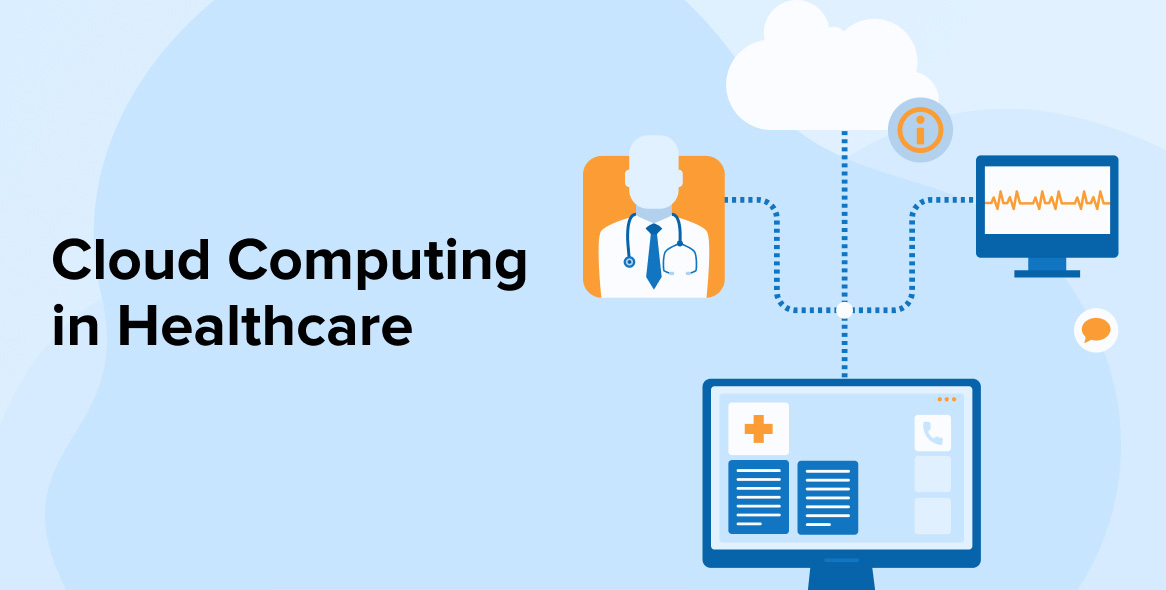
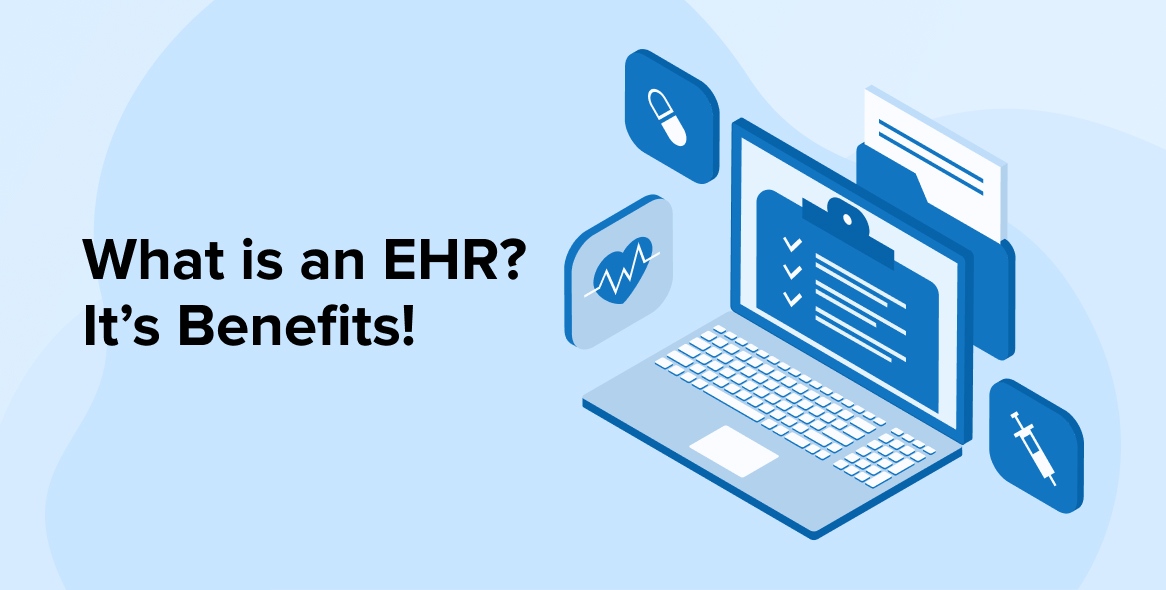
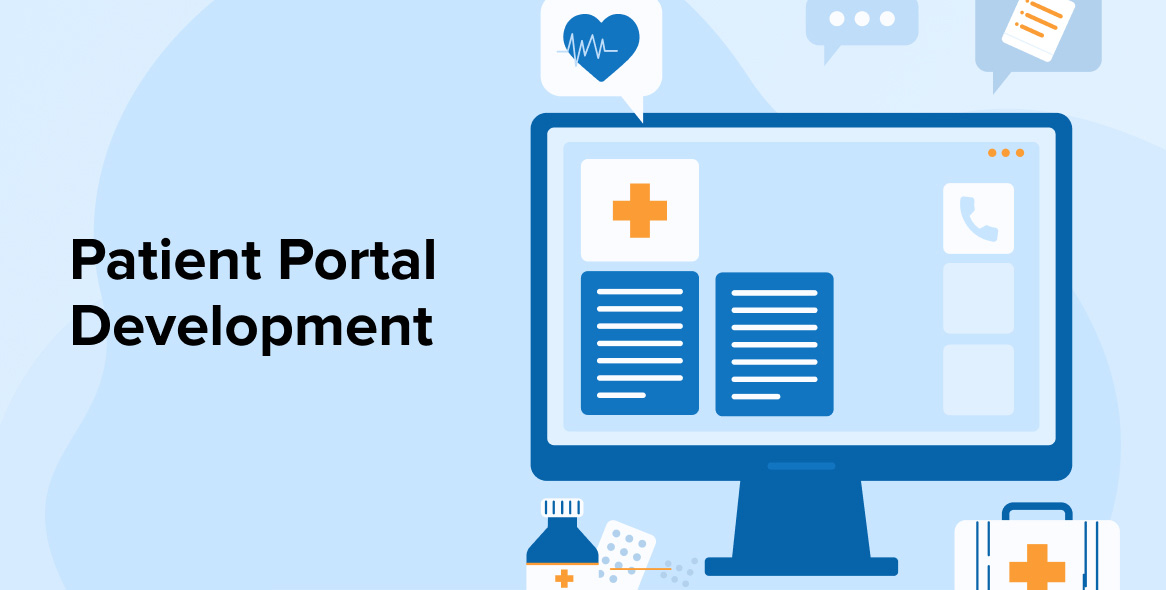

I found this blog to be highly informative and relevant, as it delves into the latest trends in digital technology in healthcare. The content is well-organized and provides a valuable overview of the key advancements shaping the future of healthcare.
I was impressed with the depth of knowledge and expertise showcased in this blog. The trends of digital technology in healthcare are presented in a clear and concise manner, making it an informative and insightful read for healthcare professionals and technology enthusiasts alike.
Thank you for sharing this insightful article about Trends In Digital Health. This Improvement in technology has caused a transformative shift in healthcare, and these trends are completely changing how we approach patient care.
This blog covers some of the most effective trends in digital health that are bringing change to the sector right now, like Consumer AI, cloud-based Data, Telehealth, Big Health Data, Remote Patient Monitoring, and many more. Thanks for sharing this valuable article.
This blog post gives an excellent overview of the latest trends in digital technology in healthcare. In this blog, the author discusses the potential benefits of these technologies, such as improved patient care, reduced costs, and increased efficiency. It also draws attention to some of the challenges that need to be addressed in order to fully realise the potential of these technologies.
This is a very informative and well-written blog post! It provides a good overview of the key trends in digital technology that are shaping the future of the healthcare industry. As a healthcare professional, this blog helps me to provide better care to my patients and save time and energy.
This article on Trends in Digital Health is a must-read for anyone looking to stay ahead in the rapidly evolving landscape of healthcare. The insights provided in this article delve into the cutting-edge developments shaping the future of healthcare.
Appreciate you sharing this article! I particularly like the section on remote patient monitoring. It's fascinating to learn how digital health technologies and medical devices are poised to enhance patient monitoring, provide support, and analyze behaviors. The addition of digital indications can greatly expand usage cases for remote patient monitoring.